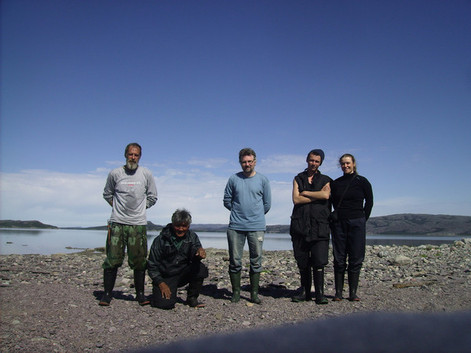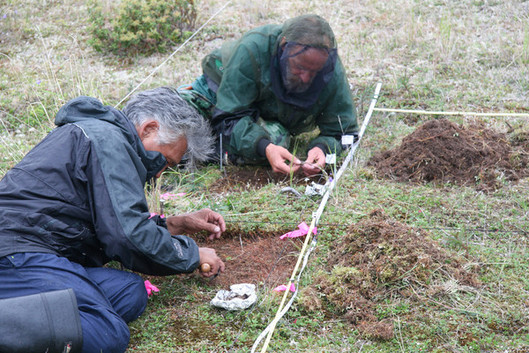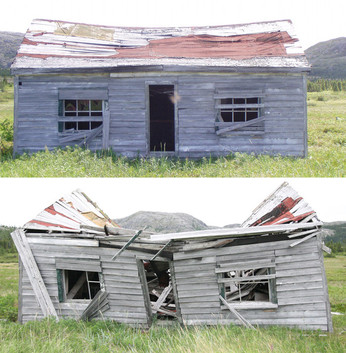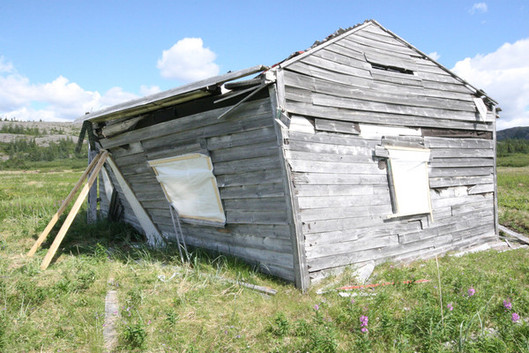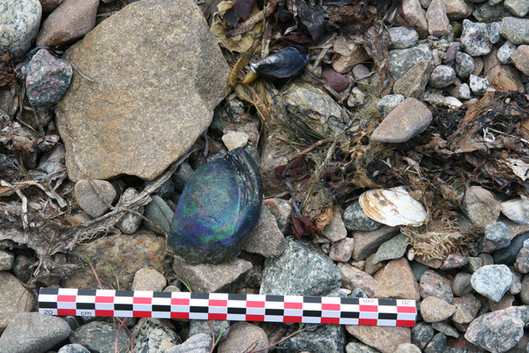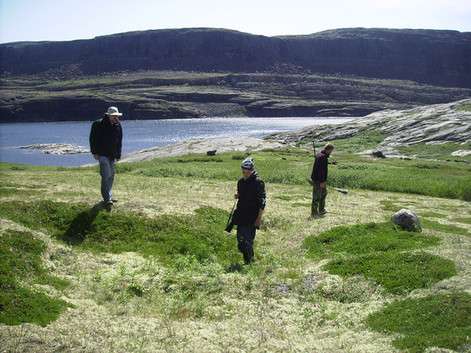Archaeological Work in the Proposed Tursujuq National Park Project, Summer 2010
By Pierre Desrosiers
Richmond Gulf has one of the most spectacular landscapes of Nunavik. This area was occupied for thousands of years by arctic people and also by other groups originating from the south. A team composed of Willie Kumarluk (hunter-guide), Andrew Papigatuk (assistant archaeologist, Avataq) and John Topping (assistant), under the supervision of Pierre M. Desrosiers (archaeologist, Avataq), conducted archaeological work in the area for 20 days. Louis Gagnon (curator, Avataq) and Annie Kasudluak (Tursujuq Park liaison officer, KRG) joined the teams for a few days. This research was financed by Kativik Regional Government and also by the CURA project Sivulitta inuusirilaurtangit atuutilaurtanigillu (CURA is a program of the Social Sciences and Humanities Research Council of Canada). In addition, two researchers, Dominique Marguerie (professor, Université de Rennes) and Stéphanie Steedland (PhD student, Université Laval), had joined the team to conduct research on the use of driftwood by Inuit.
The work mainly concentrated on the HbFx-1 site, on south-east area of Richmond Gulf, where it is planned to establish a base camp for the park. The place is a historic and contemporaneous Amerindian site. The test pits yield a few artefacts, among them were beads, a clay pipe fragment and other non aboriginal object acquired from trading.
Also, the George Papp trading post (HaGa-1) was visited to determine and assess the state of preservation of the buildings, and to propose a long-term solution for their protection. Basic temporary measures were taken in order to help their preservation such as closing the windows with plastic tarp and reinforcing the collapsing structure.
The team revisited the site Fort Richmond (HaGb-11, 1750-1759 A.D. and 1921-1928? A.D.), aiming to collect objects located in the eroded zones near the beach. A better map of the site was made, with successful identification of an area where new structures (not previously recorded in 2004) from a 1920 establishment were located. Those new discoveries include the exact location of one of the docks.
Finally, short researches were conducted at Kenuayuak (HaGb-7) and Gulf Hazard 1 (HaGd-4) Palaeoeskimo sites. This research also permitted to record new archaeological sites in the same region including a Palaeoeskimo site near Umiujaq airport.

